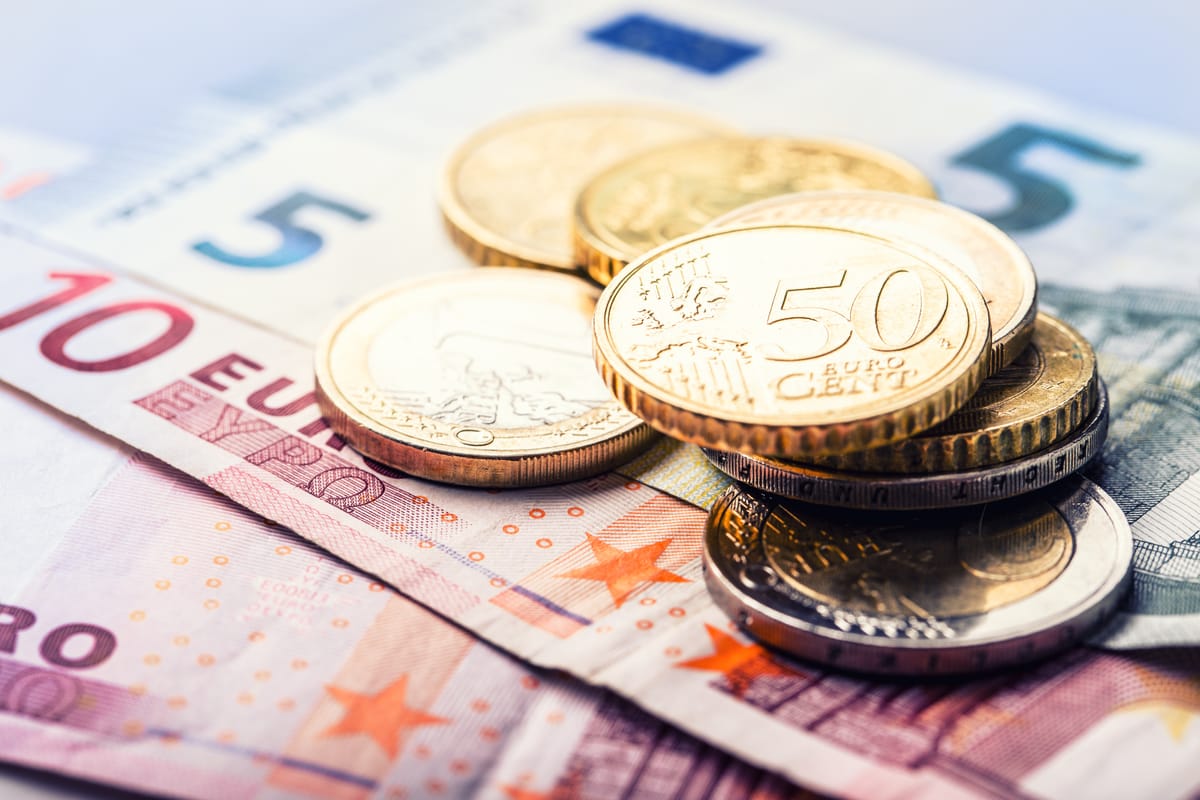GBP/EUR exchange rate midweek update: pound rises to near 11-month high versus euro
The pound euro (GBP/EUR) exchange rate rose close to a multi-month high after the single currency was undermined by diminishing business activity in the bloc.

(22/07/2024 to 24/07/2024)
Monday
The pound euro (GBP/EUR) exchange rate was stuck in a narrow range around 1.187 amid a data lull on both sides.
The single currency stayed afloat thanks to waning European Central Bank (ECB) interest rate cut bets. These were suppressed further by hawkish rhetoric from ECB Governing Council member Gabriel Makhlouf, who said: “There’s no need to actually rush to make decisions. We’ve got no predetermined rate path… We’re adopting a meeting-by-meeting approach.”
It was a similar story for the pound, which was also subdued by the announcement of a potential above-inflation pay rise for public sector workers by new UK Chancellor Rachel Reeves.
Tuesday
The pound continued to trade sideways versus the euro, virtually unchanged from the previous day’s rate.
The euro was modestly supported by a further rise in Eurozone consumer confidence in July. The indicator in the euro area and the EU continued to grow, ticking up by 1 percentage point to -13 and up by 0.7 percentage points to -12.2 respectively.
The European Commission explained: “Consumer confidence is approaching its long-term average”.
The pound traded without a clear direction amid an ongoing data lull and increasing Bank of England (BoE) interest rate cut bets a week ahead of the Bank’s next policy decision.
Market odds of the BoE firing the starting gun on its rate-cutting cycle in August have ramped up from 40% to 50% following a recent raft of mixed data releases – from hotter-than-expected inflation figures and a stubborn wage growth print to contracting UK retail sales.
Wednesday
The pound euro rate jumped above the 1.19 benchmark, near an 11-month high, as the single currency extended its losses.
Having firmed, the pair found itself trapped in a narrow range after the UK’s and the Eurozone’s preliminary PMIs hit the headlines.
Business activity in the UK increased in July after a lull ahead of the general election earlier this month. The uptick was stoked by the fastest manufacturing growth in two years and the strongest inflow of new orders since April 2023.
The S&P Global Flash Composite Purchasing Managers' Index rose to 52.7 from a six-month low of 52.3 in June, a fraction higher than the 52.6 forecast by economists.
The services PMI increased a fraction less than expected, while the manufacturing sector beat expectations, posting its highest reading in two years.
Signals that the UK economic recovery is gathering pace spurred domestic optimism, which leant the pound support.
The euro traded on the back foot after Eurozone PMIs for both the services and manufacturing sectors came in below forecast in July.
The services index dropped from 52.8 to 51.9 – the lowest reading in a five-month period – falling well short of the expected 53 print.
It was a similar story for manufacturing, which saw the index fall from 45.8 to 45.6 – a year-to-date low – rather than rising to 46.1 as forecast.
Looking ahead
A key catalyst for movement for the pair will be Germany’s IFO business climate print for July on Thursday. If, as expected, it reveals an improvement in confidence it could underpin the euro heading into the latter part of the week. However, another below forecast reading from the Eurozone’s largest economy could undermine the single currency further.
